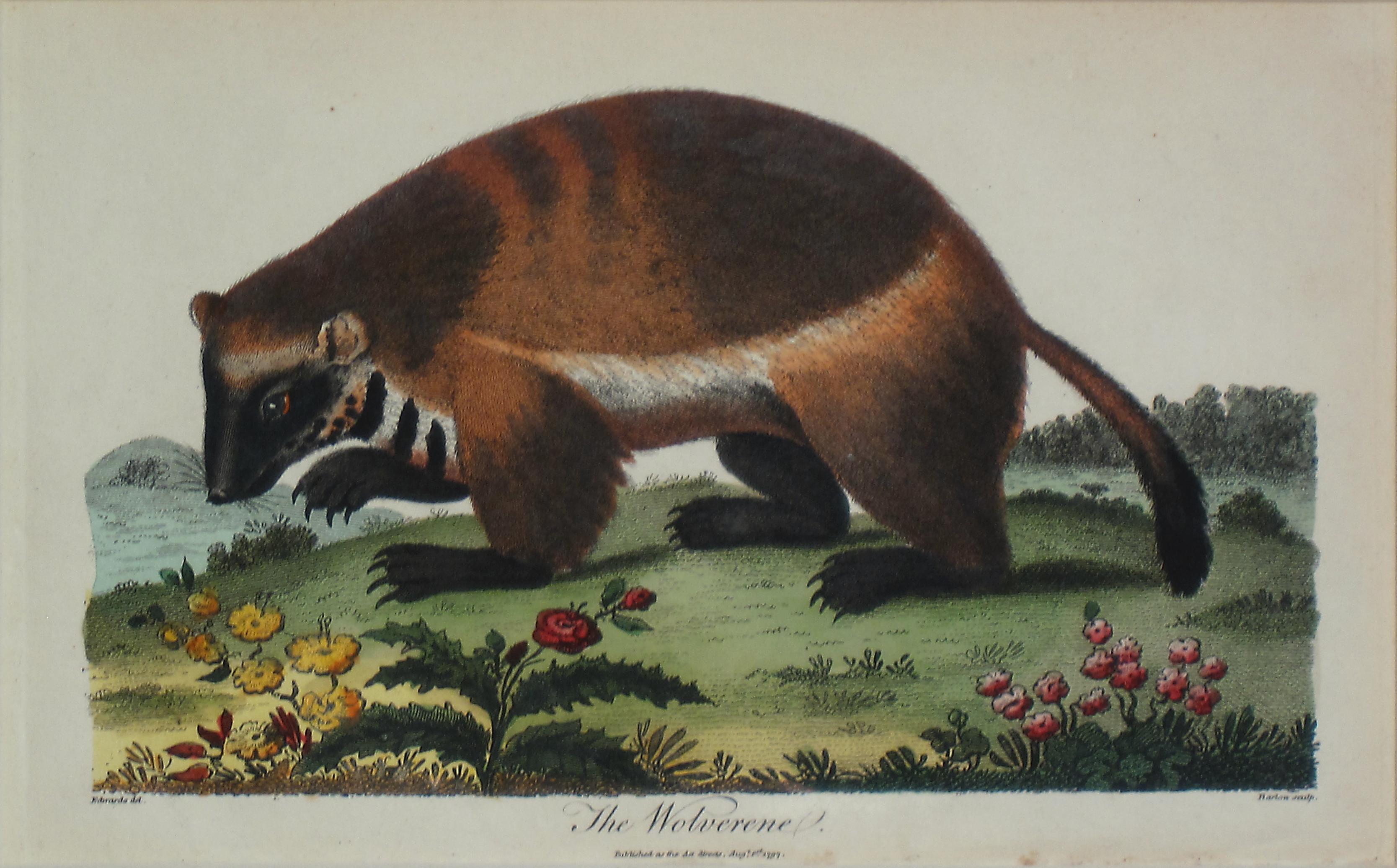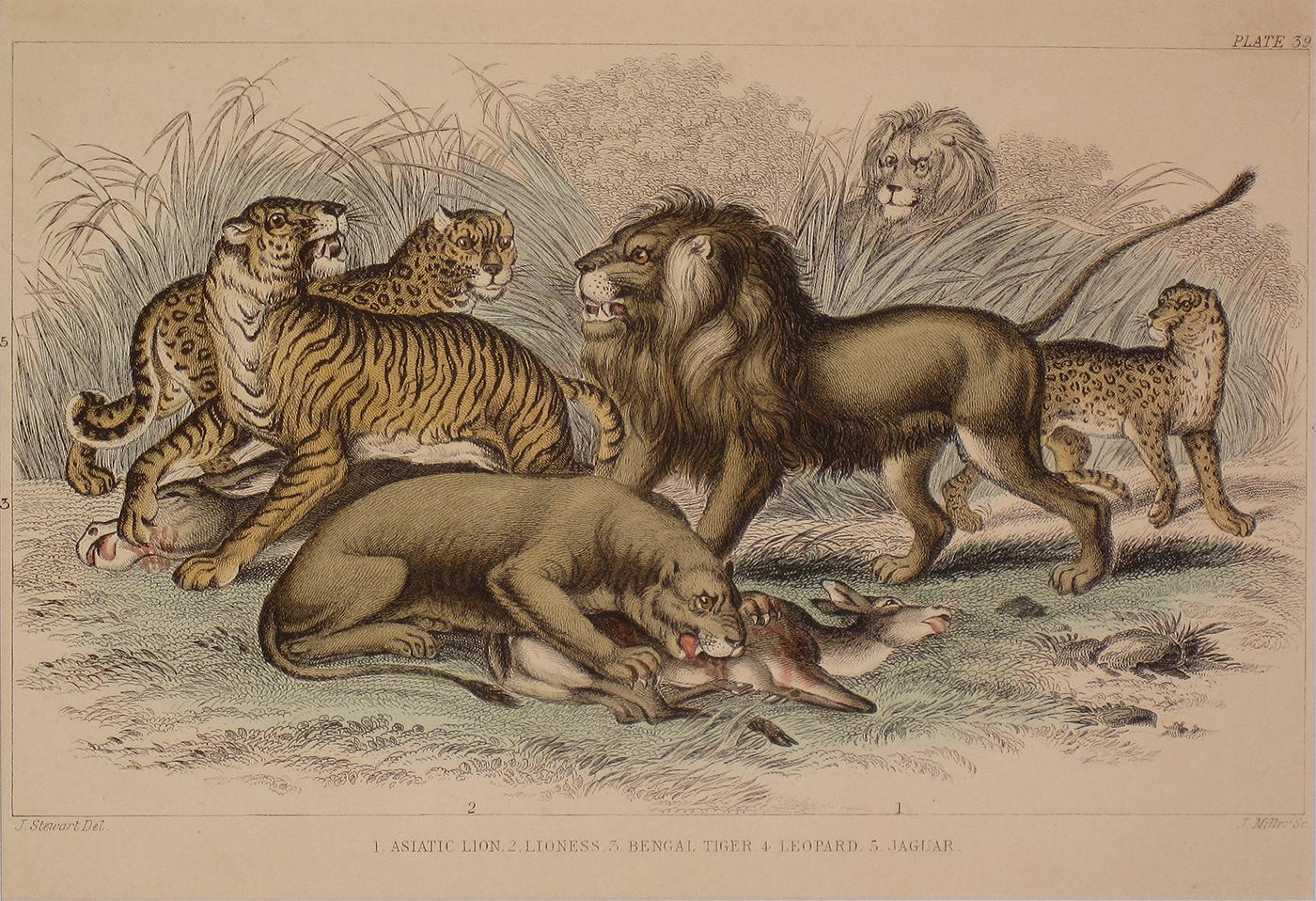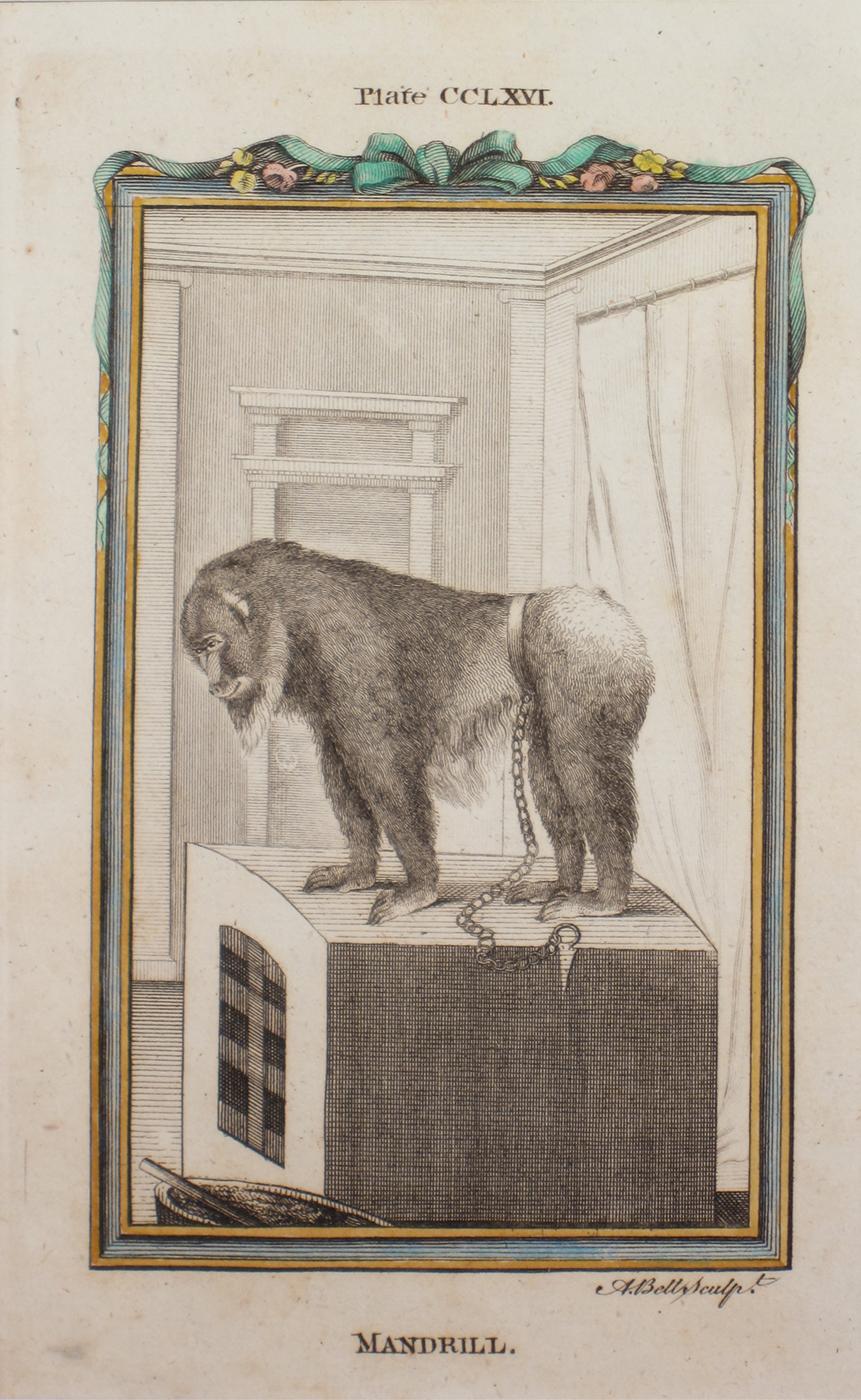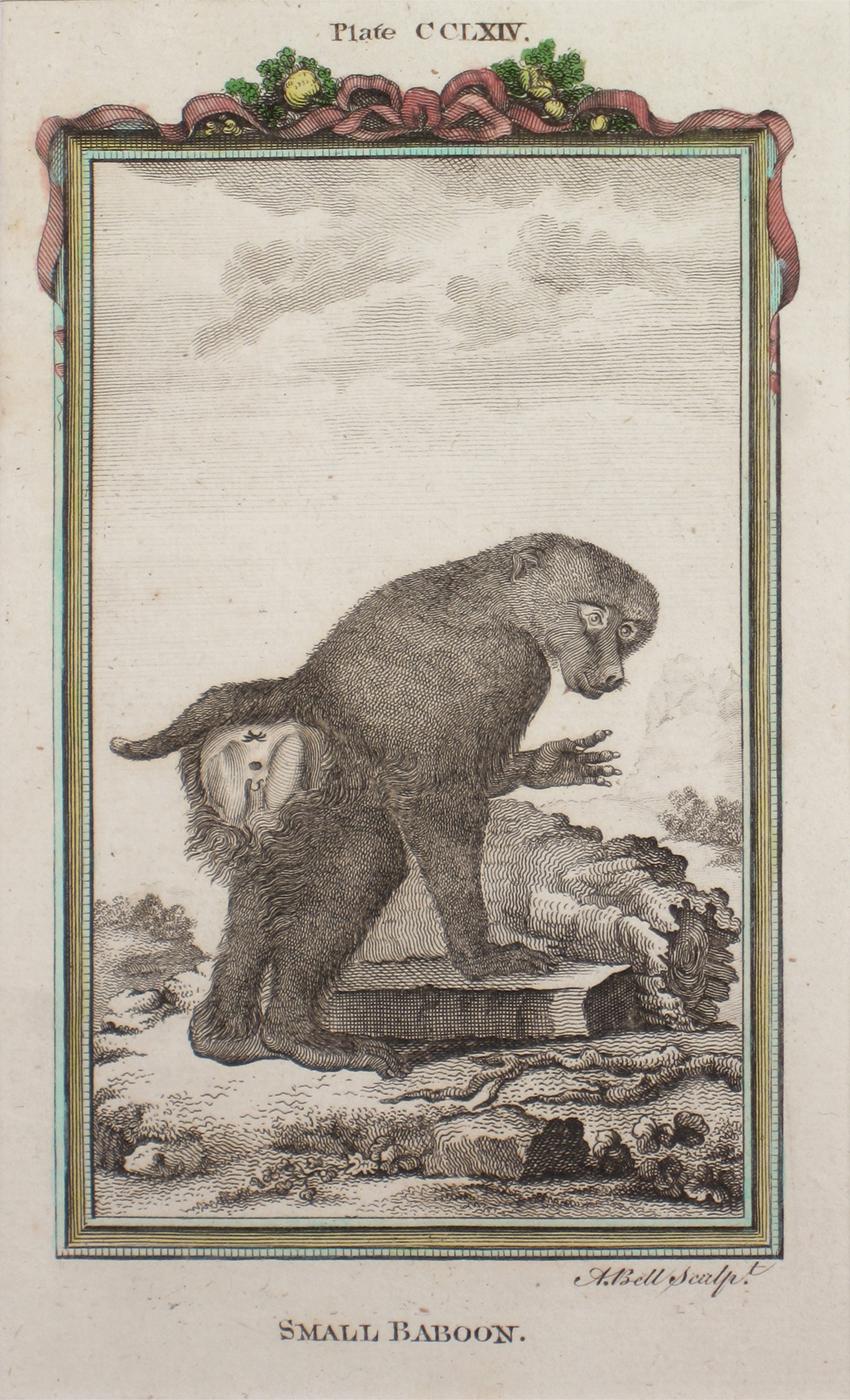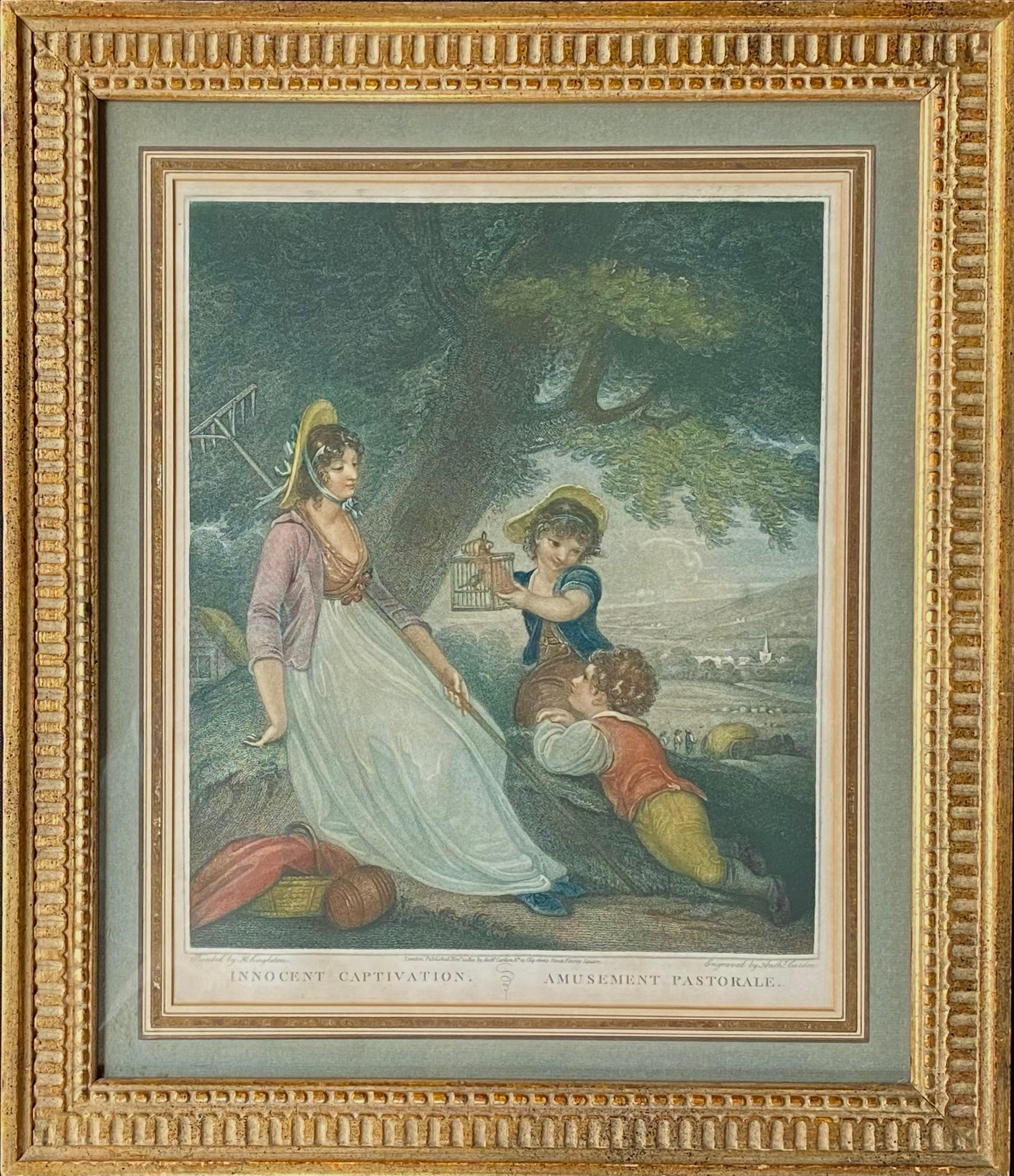Items Similar to Indian Reed (Cana)
Want more images or videos?
Request additional images or videos from the seller
1 of 8
Dr. Robert John ThorntonIndian Reed (Cana)1804
1804
About the Item
DR. ROBERT JOHN THORNTON (c1765 – 1832).
The Temple of Flora.
London, 1798-1810.
Painted by Reinagle, Henderson, Pether, et. al.
Engraved by Ward, Caldwall, Earlom, et. al.
Aquatint, mezzotint, and/or stipple engraving finished by hand.
Approximately 17.75” x 22.5” Unframed.
5 frontice pieces, 32 plates; generally 29-30 per volume, 1 or more frontice pieces.
As a boy, Robert John Thornton (d.1837) demonstrated his love of natural history with his own botanical garden and an aviary, which contained every species of English hawk, most of them captured by himself. He took his Cambridge M.B. and, following in his father's footsteps, set up practice as a London doctor. Upon inheriting the family fortune in 1797, Thornton desired to leave his mark on the world in the form of a massive work dedicated to Carolus Von Linnaeus, the great Swedish naturalist. For his own aggrandizement and that of his beloved England, Thornton wished it to surpass in scope, illustration, paper, and topography any publication produced in any other European country. He felt he was engaged upon "a national undertaking", and dedicated this homage of philosophic and literary distinction to Queen Charlotte. It was to be titled The Temple of Flora; or Garden of Nature Picturesque Botanical Plates of the New Illustration of the Sexual System of Linnaeus. Desiring the national glorification of botany and its alliance with the arts of painting and engraving, Thornton was the first person to juxtapose landscape backgrounds with his floral subjects. He opened an art gallery of the paintings from which the prints were made and subscriptions for the forthcoming books were sold. Copies of the work were sent to the Queen and Prince Regent, and to the Emperor of Russia, who sent Thornton a ring in acknowledgment of the "splendid and elaborate Botanical works."
The Thornton prints, originally to number seventy in all, were barely published in an edition of thirty at the author's expense between the years 1799 and 1807. Despite his efforts, Thornton was unable to succeed financially. Technically The Temple of Flora, as it came to be known, was not a success due to botanical inaccuracies and rather insipid text all based on Thornton's aesthetic sense. However, it is the forceful stylization of flowers, together with their historical, allegorical and fanciful backgrounds that place The Temple of Flora among the greatest botanical books of all time.
Though Thornton actually painted only one picture used for the engravings in his Temple, "The Roses", he literally directed his flower pictures. He chose the plants, arranged the symbolism and the backgrounds. For example, in the "Night-Blowing Cereus" the moon illuminates the turret clock, which has just struck midnight, the hour when this flower is fully open. Henderson, Reingal, Edwards and Pether are among the artists hired by Thornton to work on the flower designs and their backgrounds. Many times they would collaborate, as in the aforementioned "Cereus" where it states "The Flower by Reinagel, Moonlight by Pether". These plates were executed by the likes of Bartolozzi and other English master engravers and are a varied combination of mezzotint, aquatint, stipple engraving and finished in watercolor by hand. The text, primarily composed by Thornton, was lengthy, somewhat fanciful and included rather exaggerated poetry. Thornton was a man of his era, a time of romanticism, when artistic tastes ran to the sentimental, symbolic, and dramatic. The flowers from the Temple of Flora are delightful examples of that style.
In spite of tremendous public exposure and a dedication to Queen Charlotte, Thornton's venture was a financial disaster. While he attributed this to the continental war, no doubt his over-zealous attention to details, none too scientific, largely contributed to his failure. By 1811, Thornton was forced to petition Parliament for permission to set up a lottery. "An Act to enable Dr. Robert John Thornton to dispose of his collection of paintings, drawings and engravings, together with several copies of certain books therein mentioned, by way of chance" was passed in May of that year. Thus, the Quarto or Lottery edition of The Temple of Flora was published. This work, smaller in scale but not in romantic spirit, was to salvage Thornton's expenses for the original folio edition. Hoping to sell twenty thousand tickets at two guineas each, Thornton estimated the worth of his ten thousand prizes to be 77,000 pounds. This was a generous estimate as the complete sale of tickets would be worth no more than 42,000 pounds. Once again, Thornton's venture resulted in disaster. For the remaining years of his life, Thornton continued his medical practice with varying success, and attempted a brief, unhappy collaboration with the poet William Blake. Sadly when he died in 1837 his family was almost destitute. But despite these early failures, The Temple of Flora has now a permanent place as one of the greatest prizes of all time.
Reference:
Flower & Fruit Prints. Dunthorne. Da Capo Press. Washington, D. C., 1938.
The Temple of Flora: Robert Thornton. King. Little, Brown and Company, NY, 1981.
- Creator:Dr. Robert John Thornton (1768 - 1837, English)
- Creation Year:1804
- Dimensions:Height: 38.5 in (97.79 cm)Width: 30.5 in (77.47 cm)Depth: 1.75 in (4.45 cm)
- Medium:
- Movement & Style:
- Period:
- Condition:Framed to museum specifications using archival matting, backing, hinging. Glazed with ultraviolet filtering Plexiglas. Mirrored frame.
- Gallery Location:Florham Park, NJ
- Reference Number:
About the Seller
5.0
Gold Seller
These expertly vetted sellers are highly rated and consistently exceed customer expectations.
1stDibs seller since 2014
161 sales on 1stDibs
Typical response time: 2 hours
- ShippingRetrieving quote...Ships From: Florham Park, NJ
- Return PolicyA return for this item may be initiated within 1 day of delivery.
More From This SellerView All
- Cherries. Plate IX.By George BrookshawLocated in Florham Park, NJGEORGE BROOKSHAW (1751 – 1823). Pomona Britannica of a Collection of the Most Esteemed Fruits…. Engravers R. Brookshaw and H. Merke. London, 1812. Aquatint and stipple engravings...Category
Early 19th Century Academic Prints and Multiples
MaterialsEngraving, Watercolor
- Plate 88. Apples.By George BrookshawLocated in Florham Park, NJGEORGE BROOKSHAW (1751 – 1823). Pomona Britannica of a Collection of the Most Esteemed Fruits…. Engravers R. Brookshaw and H. Merke. London, 1812. Aquatint and stipple engravings...Category
Early 19th Century Academic Prints and Multiples
MaterialsEngraving
- Lauro (Laurel)By Johann Christoph VolkhamerLocated in Florham Park, NJJOHANN CHRISTOPH VOLCKAMER (1662-1744). Nurnbergische Hesperides, Oder Grunliche Beschreibung der Elden Citronat, Citronen,und Pomerantzen Fruchte. Drawn by Decker and Volckamer....Category
18th Century and Earlier Academic Prints and Multiples
MaterialsEngraving
- Melocactos Melocactus (Cactus)By Basilius BeslerLocated in Florham Park, NJBASIL BESLER (1561 – 1629). Hortus Eystettensis. Konrad Bauer. Altdorf, 1613, 1640, 1713 – 50. Copper plate engravings with modern hand-color 374 plates. 21 ¼” to 21 ½” x 16” t...Category
18th Century and Earlier Academic Prints and Multiples
MaterialsEngraving
- Plate 91. Apples.By George BrookshawLocated in Florham Park, NJGEORGE BROOKSHAW (1751 – 1823). Pomona Britannica of a Collection of the Most Esteemed Fruits…. Engravers R. Brookshaw and H. Merke. London, 1812. Aquatint and stipple engravings...Category
Early 19th Century Academic Prints and Multiples
MaterialsEngraving
- PistachioBy Johann Christoph VolkhamerLocated in Florham Park, NJJOHANN CHRISTOPH VOLCKAMER (1662-1744). Nurnbergische Hesperides, Oder Grunliche Beschreibung der Elden Citronat, Citronen,und Pomerantzen Fruchte. Drawn by Decker and Volckamer....Category
18th Century and Earlier Academic Prints and Multiples
MaterialsEngraving
You May Also Like
- The Wolverene Antique PrintBy Edward LearLocated in Sydney, NSWWolverine or Gulo gulo.. . Hand-colored copperplate engraving from a drawing by George Edwards from Ebenezer Sibly's "Universal System of Natural History" 1797. . . The prolific Sibly published his Universal System of Natural History in 1794 1797 in five volumes covering the three natural worlds of fauna, flora and geology. The series included illustrations of mythical beasts such as the sukotyro and the mermaid, and depicted sloths sitting on the ground (instead of hanging from trees) and a domesticated female orang utan...Category
Mid-19th Century Academic Animal Prints
MaterialsEngraving
- Asiatic Lion, Lioness, Bengal Tiger, Leopard, Jaguar Antique PrintLocated in Sydney, NSWAntique Steel Engraving Published 1866 by Blackie & Son, London for "A History of the Earth and Animated Nature" by Oliver Goldsmith. Matt siz...Category
Mid-19th Century Academic Animal Prints
MaterialsEngraving
- Mandrill Antique PrintLocated in Sydney, NSWMandrill Antique print Matt size 33.5cm x 26cm Image Size 17cm x 11 cmCategory
19th Century Academic Animal Prints
MaterialsEngraving
- Small Baboon Antique PrintLocated in Sydney, NSWSmall Baboon Antique print Matt size 28cm x 21cm Image Size 16cm x 10 cmCategory
19th Century Academic Animal Prints
MaterialsEngraving
- InnamoratiBy Emilio GrecoLocated in Ljubljana, SIInnamorati (eng. Lovers). Original drypoint, 1982. Edition of 90 signed and numbered impressions on Arches paper. Emilio Greco is one of the greatest sculptors, engraver and medalist of modern time. He is best known for his monumental bronze sculptures of the human figure. The sculptures and figures in graphics, primarily female nudes and portraits, tended to be refined, with elongated forms in the Italian...Category
1980s Academic Figurative Prints
MaterialsDrypoint
- “Innocent Captivation Amusement Pastorale”By Anthony CardonLocated in Southampton, NYOriginal stipple engraving on a verge type of hand laid paper. The overall size of the engraving is 15.75 inches by 12.75 inches The image size of the engraving is 14 inches by 12 i...Category
Early 1800s Academic Figurative Prints
MaterialsEngraving, Laid Paper
